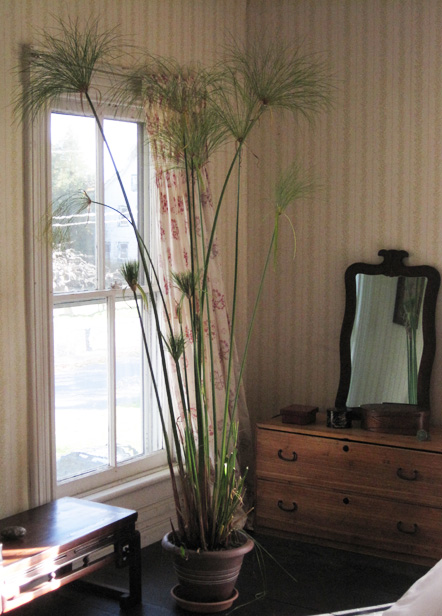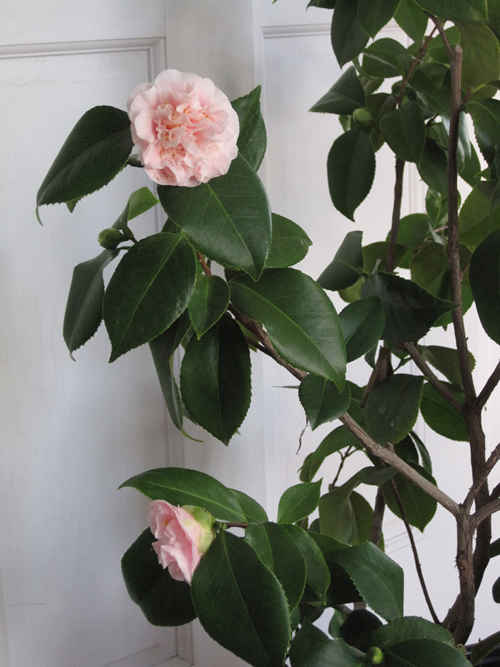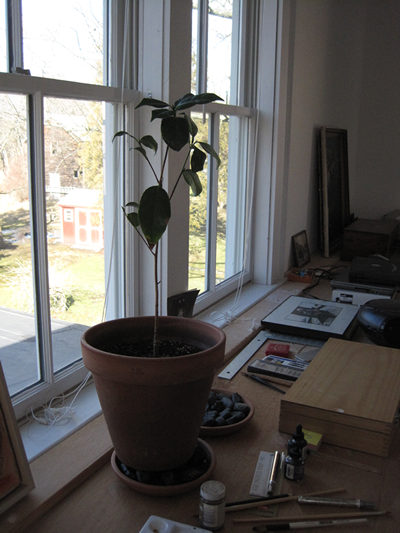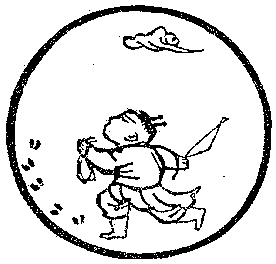The last of the Camellias
Winter is over and so too are Camellias. They bloom from December into early April. Here are the last blooms from my plants which I overwinter in a cold room in my house.
Winter is over and so too are Camellias. They bloom from December into early April. Here are the last blooms from my plants which I overwinter in a cold room in my house.
Indian summer has come to an end. The nights are cold and even though we haven’t had a hard frost yet, I’ve brought in the Camellias to over winter. I also dug up the Papyrus ‘King Tut’ that I have been growing this year in the garden. In the pots they seem huge. I’ll keep them well watered and hope they make it through the winter.

In the garden this Papyrus didn’t seem so big, but it’s almost touching the ceiling of my bedroom where I hope it survives the winter.
Click here to read more about my Camellias and how we use them for Tea
In winter a Camellia is the preferred flower in the tearoom. It blooms from October through April. Each flower may last for several days but only the bud is used with a deciduous branch from a shrub or tree such as Viburnam or Fothergilla.
– excerpt A Tea Garden in Tivoli

Camellias are native to China and Japan. They grow well in moist mild winter areas.
Here in Zone 5, I overwinter potted Camellias in a cold room of my house

This Camellia is called Shiro Wabisuke which I ordered
from Nuccio”s Nurseries
www.nucciosnurseries.com
It will have small, single white blossoms.
There are over 250 species of Camellias. The most widely grown are the Camellia Japonica. In the United States , Camellias grow well in moist, mild winter areas like the South, California, and the Pacific Northwest.
